Our reports
Comparison between Europe and Asia
The persistence of hunger in a world of plenty is the most profound moral
contradiction of our age. Nearly 800 million people in the developing
world (20 percent of the total population) are chronically undernourished.
At least 2 billion suffer from vitamin and mineral deficiencies. Yet since
the mid-1970s the world has produced enough food to provide everyone with
a minimally adequate diet.
1- The Geography of Hunger in the world :
The number of undernourished people in developing countries fell from
942 million in 1970 to 786 million in 1990 and from 36 percent to 20 percent
of the population. The poorest and most food-insecure people are disproportionately
in Africa. One-third of sub-Saharan Africa's people are undernourished
(180 million people) according to a recent report from the United Nations
World Food program. The largest number of chronically undernourished people
live in the Asia-Pacific region, although the number dropped from 762
million in 1970 to 540 million in 1990 (from 40 to 20 percent of the population).
2- The Geography of hunger in Africa :
Percentage of children under age 5 suffering from malnutrition in 2000 :
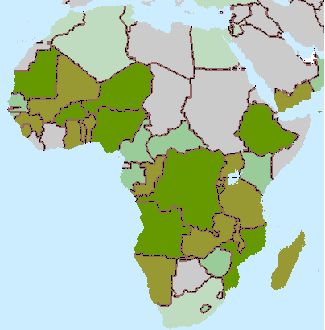

3- Causes of Hunger :
A- Poverty and powerlessness :
One of the main causes of hunger is poverty. In the world, 1.3 billion
people live on less than 1$ per day. Nearly one-third of the people in
developing countries are poor; the figure rises to 70 to 80 percent of
the population in Sub-Saharan Africa.
Poverty is linked not only with poor national economic performance but
also with an unequal distribution of income and a political structure
that renders poor people powerless, whether in a democracy or a dictatorship.
B- Population, consumption and the environment :
The world's population is expected to grow from its current 5.5 billion
to about 8 billion by 2020; more than 93 percent of this increase will
occur in lower-income countries. The earth can't support its growing population
without severe ecological damage. Even if the world's population stabilizes
by the mid-21st century, food production will have to double.
Globally, incomes and consumption differ starkly. Twenty percent of the
world's population receives 85 percent of the world's income and accounts
for 80 percent of consumption, producing two-thirds of all greenhouse
gases and 90 percent of ozone- depleting chlorofluorocarbons. This level
of consumption is not sustainable at the global level. If the current
global population lived as the richest 20 percent do, consumption of energy
would increase 10 times and minerals 200 times.
Policymakers, on all levels, need to improved lives for poor people and
reduced population growth, reduced consumption of non renewable resources,
and protection of the environment.
C- Violence and militarism :
New and continuing civil strife are the source of severe human disasters
in Mozambique, Rwanda, Somalia, Sudan… Most victims of these conflicts
are innocent civilians, not combatants.
War slows or stops food production and marketing. Crop cycles are interrupted,
seeds and breeding livestock are consumed in desperation, and children
suffer permanent damage as a result of insufficient food.
D- Racism and ethnocentrism :
Racial discrimination and competition between ethnic groups have caused
hunger, malnutrition, and resource deprivation (example : for black populations
in South Africa). In Sudan, discrimination against the black Christian
and animist south by the predominantly Arab Muslim north has locked the
country in civil war for decades. Both sides use food as a weapon, and
malnutrition rates are the highest ever documented, 80 percent in some
areas. In recent years, 1.3 million people have died from famine and disease.
In 1994, the United Nations estimated that 2.5 million Sudanese required
food aid. Between 1980 and 1991, per capita food production in the south
declined by 29 percent.
While the problems are immense and complicated, some countries have triumphed
over racial differences. Zimbabwe has achieved social integration without
substantial racial strife, offering a model for achieving multiracial
democracy and reduced hunger in nearby South Africa.
E- Gender discrimination
:
Because women bear and nourish children, they have special nutritional
needs. Yet women of every age have disproportionately higher rates of
malnutrition than men and are over represented among poor, illiterate,
and displaced people. Malnutrition among mothers also has a negative effect
on the growth of children.
Almost universally women work longer hours than men and carry primary
responsibility for household chores even when working outside the home.
Women's pay rates are nearly universally lower than those for men (on
average, 30 to 40 percent lower), even for equivalent work.
Women's needs and rights are receiving greater weight in development efforts,
but there is still a long way to go before women and men around the world
have equal economic, social, and political opportunities.
F- Vulnerability of children and elderly people :
The effects of childhood
malnutrition last a lifetime, and even into succeeding generations. Malnutrition
plays a role in more than half of the nearly 11 million deaths each year
of children under five in developing countries. Good nutrition from an
early age is vital for a child's proper mental and physical development.
Elderly people are disproportionately vulnerable to hunger and malnutrition.
Elderly populations are growing everywhere as people live longer, and
with changing lifestyles and family structures, the elderly in many countries
are receiving less care from the family. Strategies to care for the increasing
number of aged over the next 25 years need to be developed.
4- Consequences of Malnutrition :
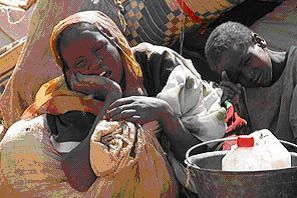
The consequences of malnutrition may include growth stunting, anorexia, susceptibility to infections, behavioral changes, and learning disabilities. The latter may have lifelong effects. For example, research has found that iodine deficiency and iron deficiency anemia during infancy can cause mental retardation or inferior psychomotor function in childhood, even after the deficiencies have been corrected.
II The associations :
1- The help for African countries
The International Mission Board made the following hunger and relief appropriations
for Africa from January 2000 through May 10, 2001.
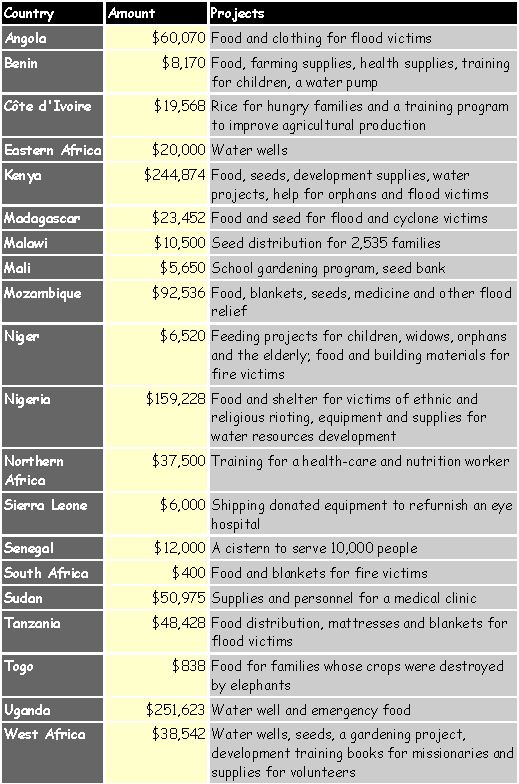
2- The Madagascar food security project
The Madagascar Food Security and Nutrition Project (SECALINE) and the Senegal Community Nutrition Project (CNP) were designed to prevent malnutrition and to diminish existing malnutrition rates among children under 3 years old. These 2 projects are an initiative of the World bank group. The objectives of the project are to reduce food insecurity and malnutrition.
In Madagascar between 45% to 49% of children are malnourished when measured by height for age or weight for age.
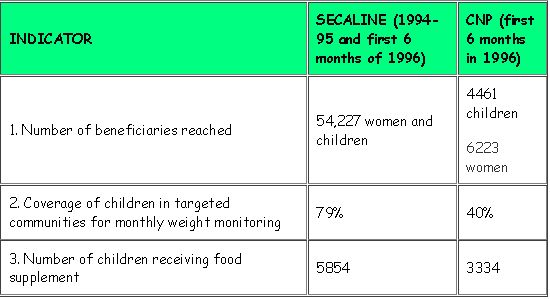
3- Sahelians can feed Sahel
"Sahelians can
feed Sahel" founded in 1990, by 5 associations
· Peuples Solidaires
· Terre des Hommes
· Frères des Hommes
· Comité Catholique contre la Faim et pour le Développement
· Association Française des Volontaires du Progrès
" Green Africa" aims at improving food security in Sahel by
helping peasants to commercialize their cereals and by sensitizing northern
civil society to the fact that economic development in Africa is possible
if sensible financial aid aims at building on existing local potentials.
" Green Africa" in Sahel : a macro-economic perspective:
" Green Africa"
is the result of a European sensibility campaign and of lobbying activities
on European officials to turn food aid into financial subsidies for the
commercialization of African food crop
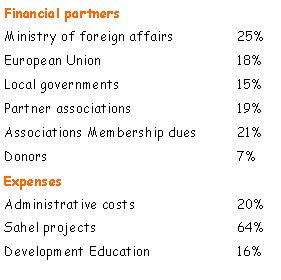
4- Action contre la faim :
"Action contre la faim " is a French association. It was created
in 1979 by F. Giroud, B. Henry-Lévy, A. Kassler. The association
intervenes during the wars, the big famines in the poor countries of the
planet.
4 associations are members of the international main of "Action contre
la faim": Action contre la Faim-France, Action Against Hunger-USA,
Action Against Hunger-UK et Acion contra el Hambre-Espana.
" Action contre la faim-France " :
· 2 millions of men, women and children help every years.
· 220 voluntaries: doctors, nurses, administrators…
· 2850 people recruited and formed on the ground.
· 19 countries of interventions
· 41.7 millions of euros
· 300 000 givers
5) Comité catholique contre la faim et pour le développement (CCFD) :

In 1961, The CCF (comité contre la faim) was born in France to
help poor countries. This association is created by the French catholic
organizations. In 1966 the CCF became the CCFD( Comité contre la
faim et pour le développement). The CCFD is compose of 15 000 people.
In 40 years the associations did more than 6000 actions in about 80 countries.
The CCFD in Africa :
To cope with difficulties in Africa The CCFD undertake some actions:
· Help of local projects
· help to the organization of producers, peasants (financial help,
agricultural techniques, savings to finance means of production and projects)
· help at the diversification
· development of regional markets( for example help the peasants
to commercialize their products
The actions of the CCFD are finance at 79% by thSoudanWrestle against
hunger with displaced populations
TunisieSave the oasis of Chenini e presents of people. The rest comes
from the public and European power or foundations.